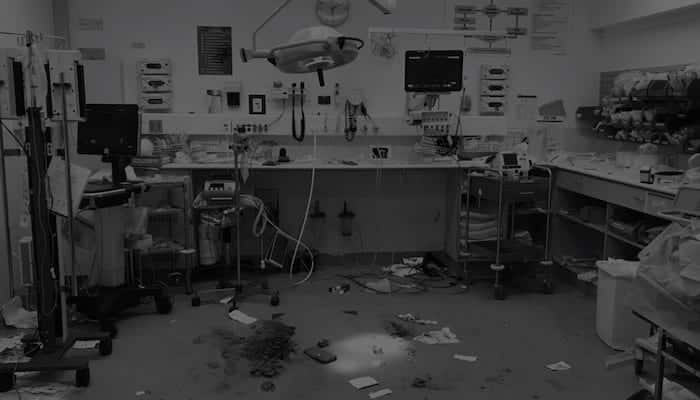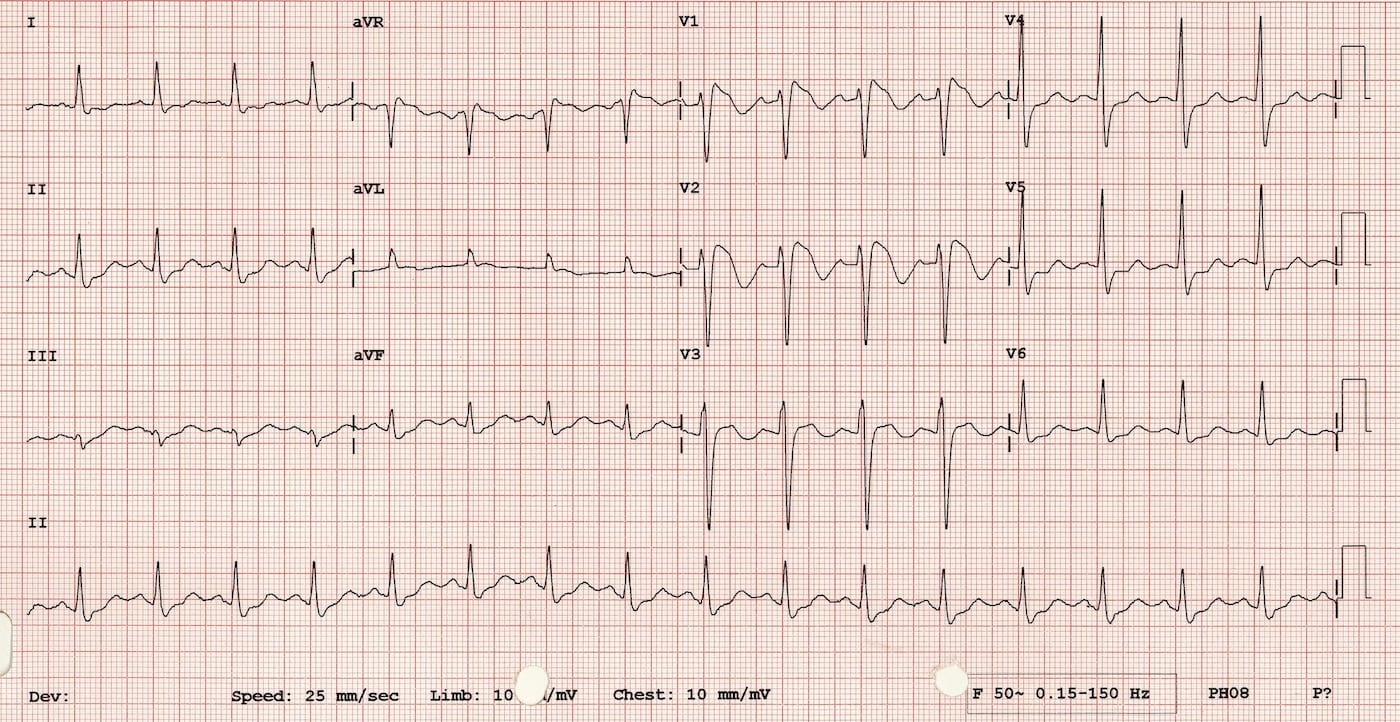ICE 005: Collapse ECG
A 27 year old man had a dizzy spell and then collapsed while playing indoor soccer. Bystanders thought that he had a brief loss of consciousness but he woke up quickly and now feels well. He denies any current symptoms.
Questions:
- Describe the abnormal features on his ECG
- What is the likely diagnosis and underlying abnormality?
- What ongoing investigation and treatment may he need?
Reveal the ICE answer
The ECG shows sinus rhythm at 84 beats per minute with unusual downward sloping ST segment elevation in leads V1 and V2. The T waves in both V1 and V2 are inverted. This T wave inversion alone can be a normal variant in younger people but the ST segment changes are pathological.
This ECG is typical of so called “Brugada” syndrome. There are 3 reported ECG variants of this syndrome, all of which involve ST segment elevation in V1 and V2. This ECG shows the most common Type 1 variant. All are thought to be due to a genetically determined abnormality in sodium channel function, a “channelopathy”. It is most commonly found in those of South East Asian, and to a lesser extent Mediterranean descent. It is a high risk syndrome, associated with sudden cardiac death at a young age due to VF or polymorphic VT.
Collapse during exercise in a young person should always be investigated carefully as the differential must include underlying cardiac abnormalities such as Brugada syndrome, prolonged QT syndrome and hypertrophic cardiomyopathy. Brugada syndrome patients should see a cardiologist for electrophysiologic studies and possible implantable defibrillator insertion. Avoid giving them sodium channel blocking drugs in ED.
References:
- ECG Library – Brugada syndrome

ICE CASES
Ian’s clinical emergencies
emergency physician keen on medical education and cycling

